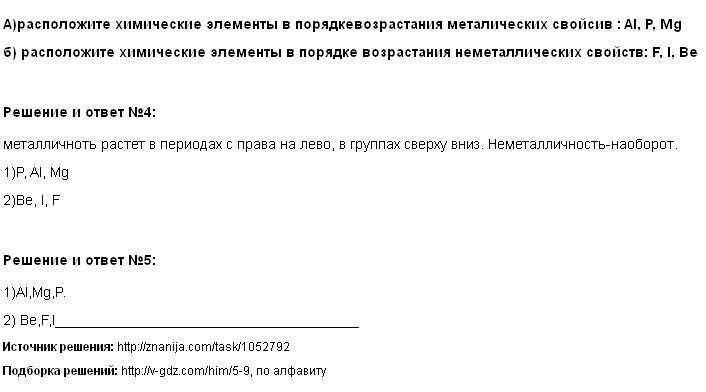Raspolozhite Elementi V Poryadke Vozrastaniya Ih Metallicheskih Svojstv

From the essays of a young scholar in Kamchatka whose historical interests led him to a reassessment of Trotsky, to a student-sponsored exhibit of paintings by a local surrealist artist in Irkutsk, to verbal clashes between students at Novosibirsk State University and visiting Americans during 1970 May Day protests against the war in Vietnam, Aleksei Borzenkov surveys youth political and cultural activity in the Urals, Siberia, and the Russian Far East from de-Stalinization through perestroika. Readers interested in Soviet youth culture, student life, and grassroots political expression will find a wealth of detail about individuals, organizations, and student publications; a bibliographic review in the introduction and thorough footnotes provide an extensive guide for further research. This multivolume work thus makes an important contribution on a topic about which there is little available information. The book falls short, however, in providing an explanation or analysis for the activities it chronicles, while its structure makes it difficult for the reader to connect on-the-ground activities to larger social and political trends.
Molodezh i politika: Vozmozhnosti i predely studencheskoi samodeiatelnosti na vostoke Rossii (1961-1991 gg.) (review) Anita Seth Kritika: Explorations in Russian and Eurasian History. Regioni V Evropa: Balkanski Poluostrov, Zakavkazie, Iberii Ski Poluostrov, Iztochna Evropa, Istoricheski Oblasti V Evropa, Yuzhna Evropa by Iztochnik Wikipedia starting at. Regioni V Evropa: Balkanski Poluostrov, Zakavkazie, Iberii Ski Poluostrov, Iztochna Evropa, Istoricheski Oblasti V Evropa, Yuzhna Evropa has 0 available edition to buy at Alibris.
Borzenkov draws on materials from 40 local and regional archives, as well as personal collections, interviews with participants, and journalistic reminiscences that appeared after perestroika. He also cites extensively from regional and youth publications. The books include chapters devoted to a wide range of youth activities, including May Day festivals ( maevki), institute- and factory-based singing and theater groups, student publications, youth-initiated discussions, and underground organizations. The first volume is devoted to officially sponsored youth programs, while the second deals with informal, unauthorized, and nonconformist activity.

A third, supplementary volume contains photographs and reproductions of the people, events, and works discussed. Eurosoft pc check download windows 7. [End Page 153] An introductory chapter makes the book's strongest attempt at analyzing the upswing of student activism in the 1960s, citing primarily demographic and economic factors. Not only did youth make up a relatively high percentage of the overall population during this period, but increasing investments in higher education allowed rapid growth in the number of students at universities and technical institutes, which became the seedbeds of youth activity. Students, buoyed by relative prosperity in the 1960s and early 1970s, enjoyed improved university facilities and looked optimistically toward the prospect of upward mobility.